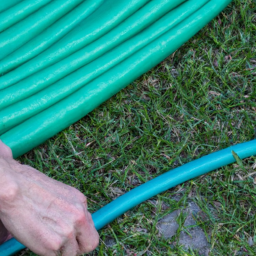How To Patch A Garden Hose
How To Patch A Garden Hose
How to Patch a Garden Hose: The Basics
Gardening is a rewarding activity, but gardeners require the proper equipment to maintain their plants. One of the most important pieces of equipment is the garden hose, a flexible rubber tube used for transporting water from a water hose to a range of plants and gardening tools. Unfortunately, wear and tear can lead to holes, tears, or punctures in a garden hose, resulting in water leakage. Fortunately, patching a garden hose is a relatively simple process can be completed by gardeners of all levels.
Understanding the Type of Damage to Your Garden Hose
Before you can fix a damaged garden hose, it's important to understand what type of damage your hose has suffered. Generally, garden hoses suffer from one of two types of damage:
Holes:
Small holes in your garden hose can be caused by punctures from sharp objects, such as metal tips on garden tools. These holes are typically located over the hose's full length.
Tears:
Tears are larger, more recognizable damages to the garden hose that create a noticeable gap in the hose's surface. These tears are usually caused by diffusing too much force being applied to a singular area of the hose, such as a tight knot or twist in the hose. As a result, a tear is usually relatively localized, i.e. near a twist or knot in the hose.
Once you understand the type of damage affecting your garden hose, you can begin the patching process.
Choosing a Patch Kit
To fix a damaged garden hose, you'll require a garden hose patch kit. This kit includes special adhesive formulas and patches designed to tightly adhere to the garden hose's material. When selecting a patch kit, ensure that you select a kit suited for the material of your hose. Different hoses are composed of different materials (e.g. plastic, aluminum, rubber, etc.). To ensure the patch is able to firmly bond with the hose, purchase a kit made for the material of the hose being fixed.
Finally, thoroughly read the provided instructions within the patch kit. Each garden hose patch kit is slightly different and requires specific steps to ensure a proper seal.
Applying the Patch
Once you have the necessary patch kit, you can begin applying the patch. Generally, the patching process consists of the following steps:
Cleaning the Hose
To ensure a proper seal, the hose must be clean and dry before applying the patch.
Applying the Adhesive
Apply the adhesive (included in the patch kit) to the damaged area and surrounding areas on the hose.
Applying the Patch
Place the patch firmly over the damaged area and press down for 30 seconds. Allow the adhesive and patch to dry for 3 hours before use.
Other Considerations
Once you've applied the patch, you should inspect the hose every few months for signs of wear and tear. You should also check the patch for wear. If the patch is becoming discolored or peeling off, you should reapply the patch.
In Summary
Patching a garden hose is a relatively simple process. First, identify the type of damage and select an appropriate patch kit for your hose's material. Then, clean and dry the hose, apply the adhesive to the damaged area, place the patch over the damage, and let the adhesive and patch dry for 3 hours. After applying the patch, inspect your hose every few months for signs of wear and tear. With the help of this guide, you can easily patch and maintain your garden hose.

Previous Page
Next Page
